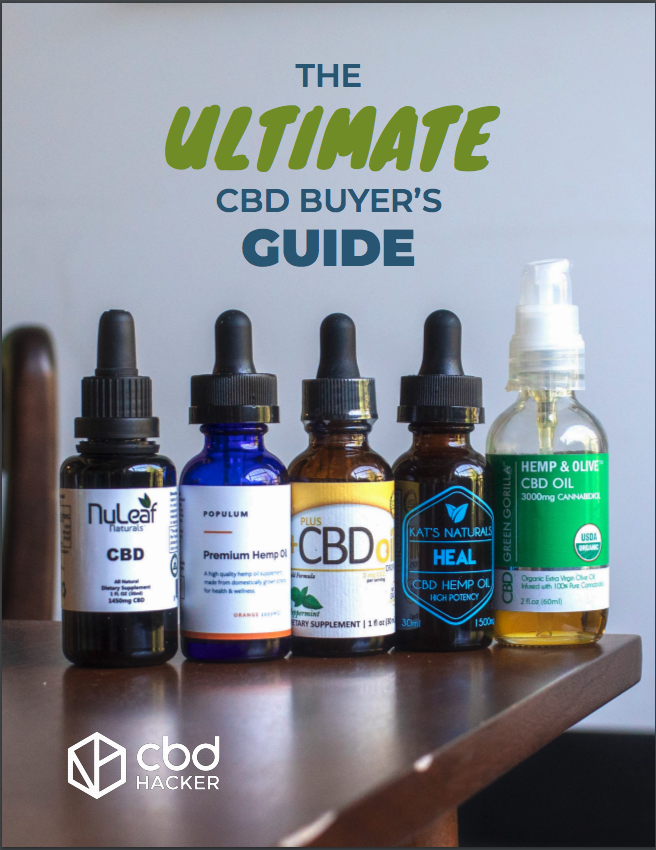You may have seen the terms “nanoemulsified CBD” or “water-soluble CBD” tossed into a CBD product description like they’re household words. But what do they actually mean?
The explosion of the CBD industry has created so much new vocabulary that sometimes it seems like you need a pocket translator just to do your CBD shopping.
Here, we’ll look at the basics of nanotechnology and discuss whether it’s something that will actually make CBD products better — or just a gimmick to sell more product.
And since we don’t have degrees in Pharmacology, we searched out some working scientists with knowledge on the subject of CBD and nanotechnology. Read on for what we found out.
What is Nanoemulsified CBD?
First, let’s get the terminology out of the way. Nano CBD, water-soluble CBD, and nanoemulsified CBD are all used interchangeably, and all refer to the same thing.
Generally, CBD is hydrophobic, meaning that it does not want to mix with water. But once CBD particles become small enough, they begin to look and act like a truly dissolved substance. Hence the term, “water-soluble CBD.”
So how small are those particles? Well, for perspective, the diameter of a human hair is about 100,000 nanometers (nm). A good water-soluble CBD, on the other hand, should have particles of less than 100nm.
That is obviously very, very small indeed. But why would smaller be better when it comes to CBD?
Best Nano CBD
Which CBD brands offer the best water-soluble (or nano) CBD?
These are just a few examples of trusted brands that we’ve vetted for quality:
Or see our full CBD oil reviews of each brand:
QUICK OVERVIEW: Our Top Picks for Water Soluble CBD
| IMAGE | PRODUCT | |
|---|---|---|
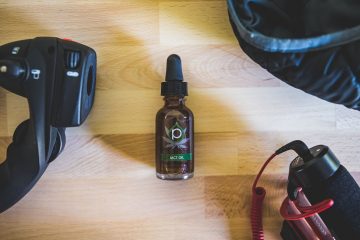 | OUR TOP PICK Hemplucid
| CHECK BEST PRICE → |
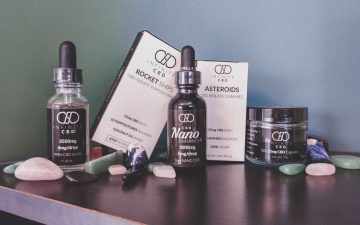 | Infinite CBD
| CHECK BEST PRICE → |
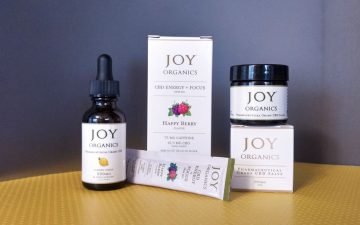 | Joy Organics
| CHECK BEST PRICE → |
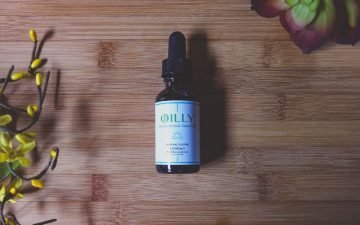 | Oilly
| CHECK BEST PRICE → |
What Does the Research Show about Water-Soluble CBD?
Grandiose claims in product descriptions aside, most research on nano CBD is in the very early stages. For that reason, it’s not easy to find studies that target CBD specifically. There are several studies currently taking place, though, and some early results point to the benefits of nanoemulsified CBD.
For example, a 2017 study looked at the relative bioavailability of a CBD/THC nanoemulsion compared to Sativex, a whole plant CBD/THC oromucosal spray. Nine healthy volunteers participated in the two-way crossover, single administration clinical study and the findings were conclusive.
The nanoemulsion resulted in dramatically higher absorption of both THC and CBD when compared to Sativex. It’s important to note, though, that this particular nano formulation also included Piperine, a natural absorption enhancer.
Another promising study, this one conducted in 2018, again studied the relative bioavailability of Sativex against a CBD/THC nanoformulation. This study, which involved 14 healthy male volunteers, again showed a significant improvement in bioavailability.
When the blood samples were collected, researchers found that the time the nanoformulation took to achieve maximum absorption was much shorter than it was for Sativex. In addition, the overall absorption of CBD/THC was higher.
The conclusion: “The relatively faster absorption and improved bioavailability, compared to the oromucosal spray, justifies further, larger scale clinical studies with this formulation.”
Nano-CBD and Absorption
With a limited amount of published research on nano-CBD to go on, we turned to the experts for information.
Anubhav Pratap Singh, PhD, is a scientist at the University of British Columbia. Singh and his team are currently working on a research study looking specifically at the benefits of nanoemulsification for cannabinoid-rich hemp oil.
According to Singh, CBD particles at the nano-scale have remarkably different properties than what we observe in our daily macro-scale world. “The main reason is the increased surface area,” explains Singh, “which enhances the chemical and physical processes that take place.”
According to Singh, with the increased surface area, “electromagnetic forces start dominating, and in the CBD world, this makes it really interesting!”
At this point the generally hydrophobic CBD molecules, which do not normally dissolve in water, now begin to act like a water-soluble substance, making them more easily absorbed by our water-loving bodies.
Nanoemulsifying CBD, Singh continues, “means that large amounts of CBD molecules which would either be eliminated (due to poor solubility) or rejected (due to the larger size of general CBD molecules) or destroyed (by chemicals and enzymes in the gastrointestinal tract) will be more readily absorbed.”
Nanotechnology for Easier Dosing
He explained that the possible benefits of nanotechnology are even more far-reaching than increased absorbability. Accurate dosing of CBD at present is very difficult, due to the number of variables which are unique to each person.
Nanoemulsions, on the other hand, “have a more predictable absorption rate and bioavailability rate, so we have a better idea of how much will be absorbed and how fast. The on/off times are more predictable (when the CBD starts and stops taking effect)…so it becomes much easier to manage.”
Ultrasonic Liquid Processing for Water-Soluble CBD
So how does CBD, which is naturally hydrophobic, become water soluble? Peshkovsky explained the process of nanoemulsification for us (which, if you want to really geek out, you can watch here):
“Essentially, ultrasound creates very small vacuum bubbles in the [CBD extract]. Those bubbles want to implode because we’ve created a vacuum, and when they do implode, one wall of the bubble travels through the other, creating a tiny micro-jet that hits surrounding droplets and breaks them into smaller droplets.”
This process repeats itself 20,000 times per second until particles are small enough (around 100nm) for light to pass through. “The smaller they are, the more translucent,” Peshkovsky explains, “Once you reach that point, [the solution] will never separate.”
As Singh mentioned above, those tiny particles create much more surface area, so a surfactant (a substance that reduces surface tension) is then added to coat and stabilize those particles.
At this point, voila!, you have a nanoemulsion that is permanently stable and provides higher and more predictable bioavailability.
“That is — if it’s been done correctly,” qualifies Peshkovsky. Which brings us to the question: “What does nano CBD look like when it hasn’t been done correctly?”
Nano CBD and Consumer Considerations
And well might you ask. The CBD industry is infamously unregulated, so a company can throw out the words “nano-emulsified” or “water soluble” without any explanation of their process.
Peshkovsky pointed out a few red flags which might indicate a sub-par product:
- Clear bottles that let light in unimpeded. Light degrades CBD and it will probably be destroyed by the point of sale.
- Cloudy or milky looking liquid. High-quality nano CBD lets light pass right through it and should be transparent.
- A bottle that needs to be shaken. Properly nanoemulsified CBD is permanently stable and will not need to be shaken.
Another thing to keep in mind is labeling. CBD companies usually measure CBD content in milligrams. But the label on bottle of nano-CBD could say that it contains 10 billion nanograms of CBD. This equals only 10mg of CBD but that doesn’t sound quite as impressive, does it?
Water-Soluble CBD Products
Vaping already has very high bio-availability, as do sublingual tinctures, though nano-emulsification would likely increase that and make the effects quicker and more predictable.
Topical formulas are another area where nanotechnology offers a big return, according to Peshkovsky, “The CBD particles are smaller, so they fit through tight junctions between cells, and they’re also in water. An oily cream will sit on your skin for a long time, but any water-based serum will get soaked up.”
And, as Singh discussed, the low-bioavailability of any CBD edible or pill that has to go through your digestive tract should, to a large degree, be remedied by nano-emulsification.
We talked to Hannah Smith, the director of communications at Joy Organics, about their experience of creating nano-CBD products. For them, choosing nano-CBD for their soft gels and skincare line came from personal experience of its benefits.
“For Joy (the company founder), what worked best was a soft gel with nanotechnology, and the feedback we get from our customers about our products indicates that we’re on the right track. Our bodies are 60 percent water, so it makes sense that things that dissolve in water work better.”
So is nanotechnology set to take over the CBD world? Smith predicts that there is room in the industry for both nano-CBD and conventional formulations.
“We’ll probably always have the less processed CBD for those who want things closer to their natural form as well as products for those looking for CBD that’s been enhanced by technology.”
With the intense competition in the CBD market, we’re sure to see more and more CBD products that utilize the nanoemulsification process. Just be sure to stick to companies with rigorous third-party testing – and stay away from nano CBD bottles that say “shake me!”





